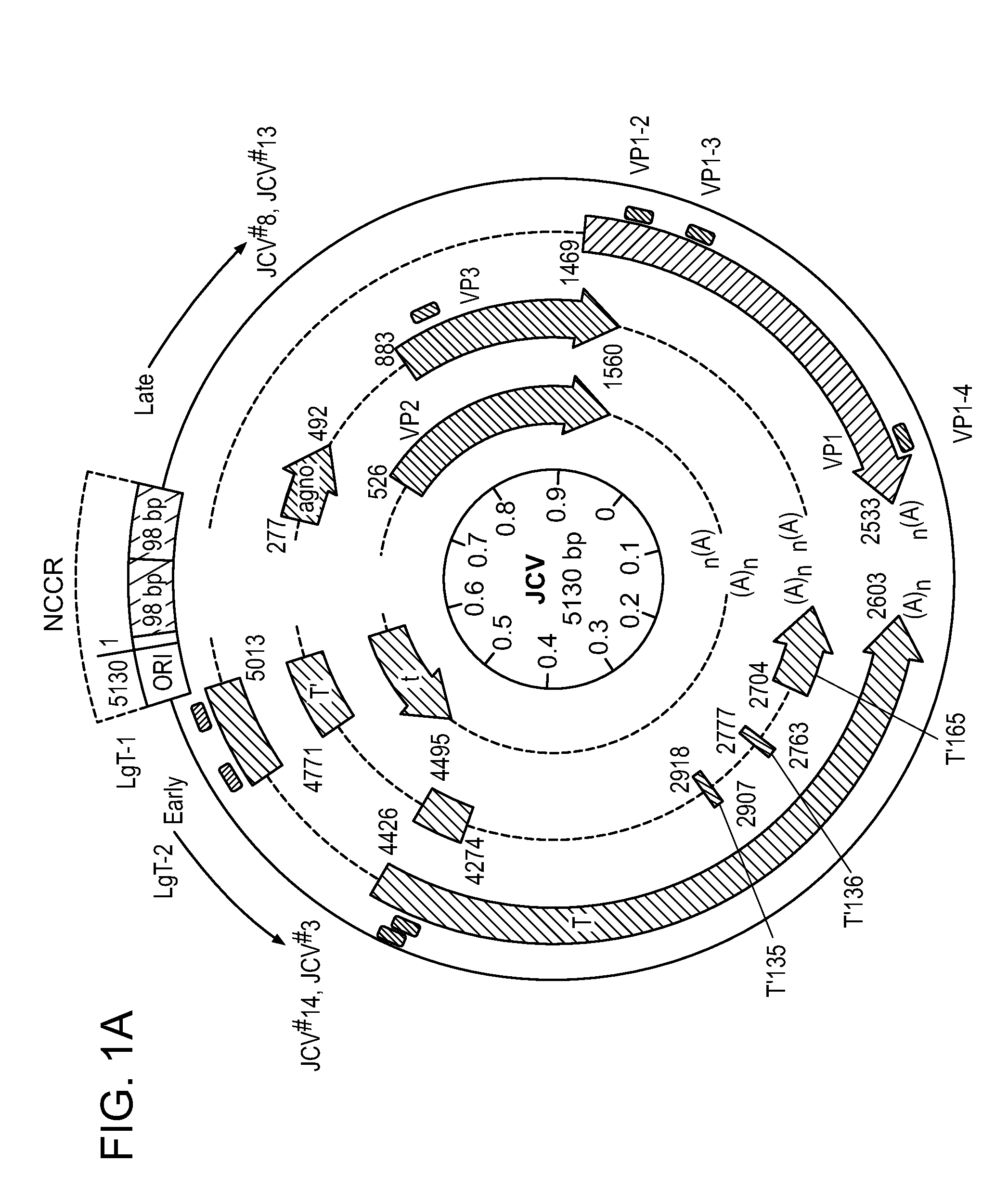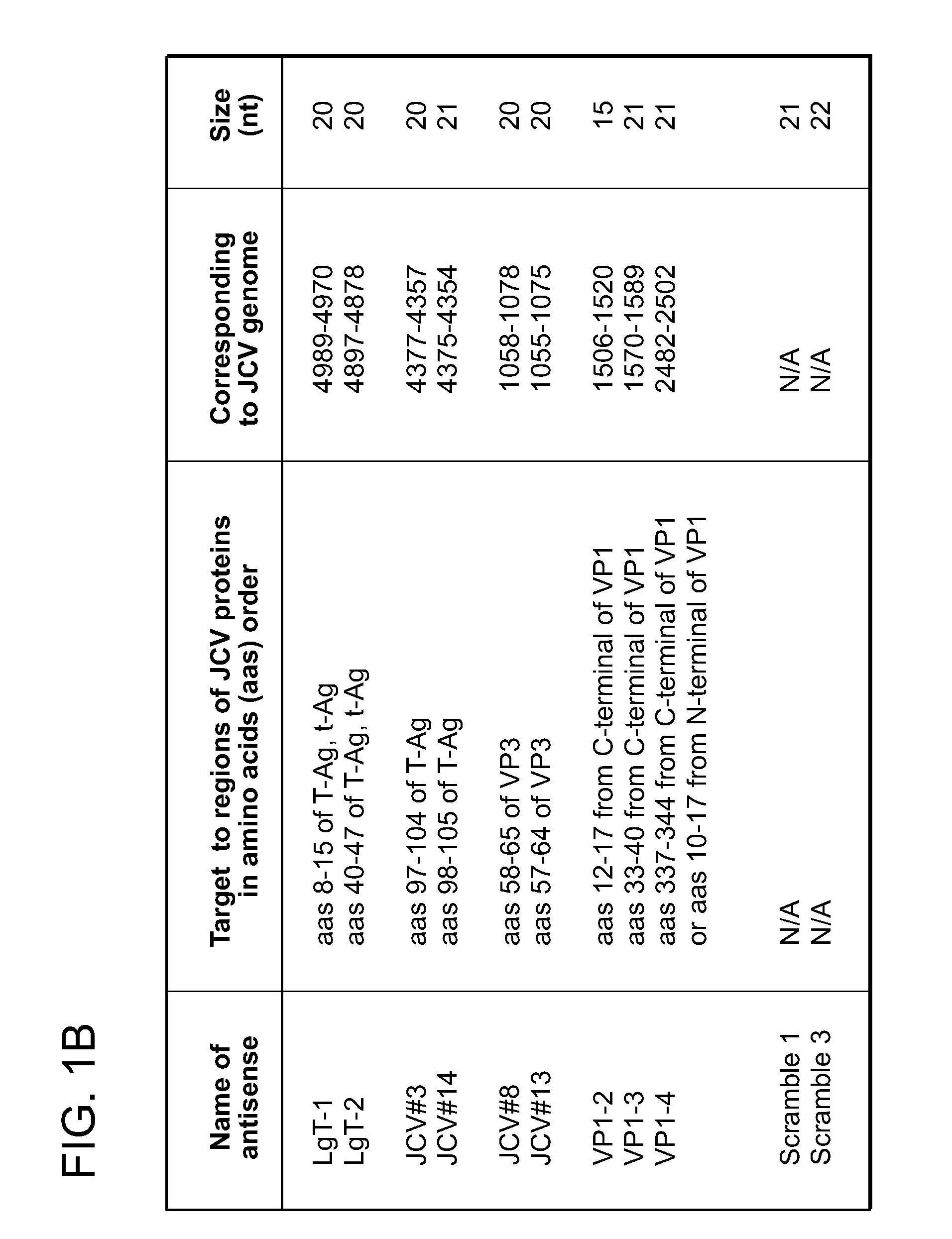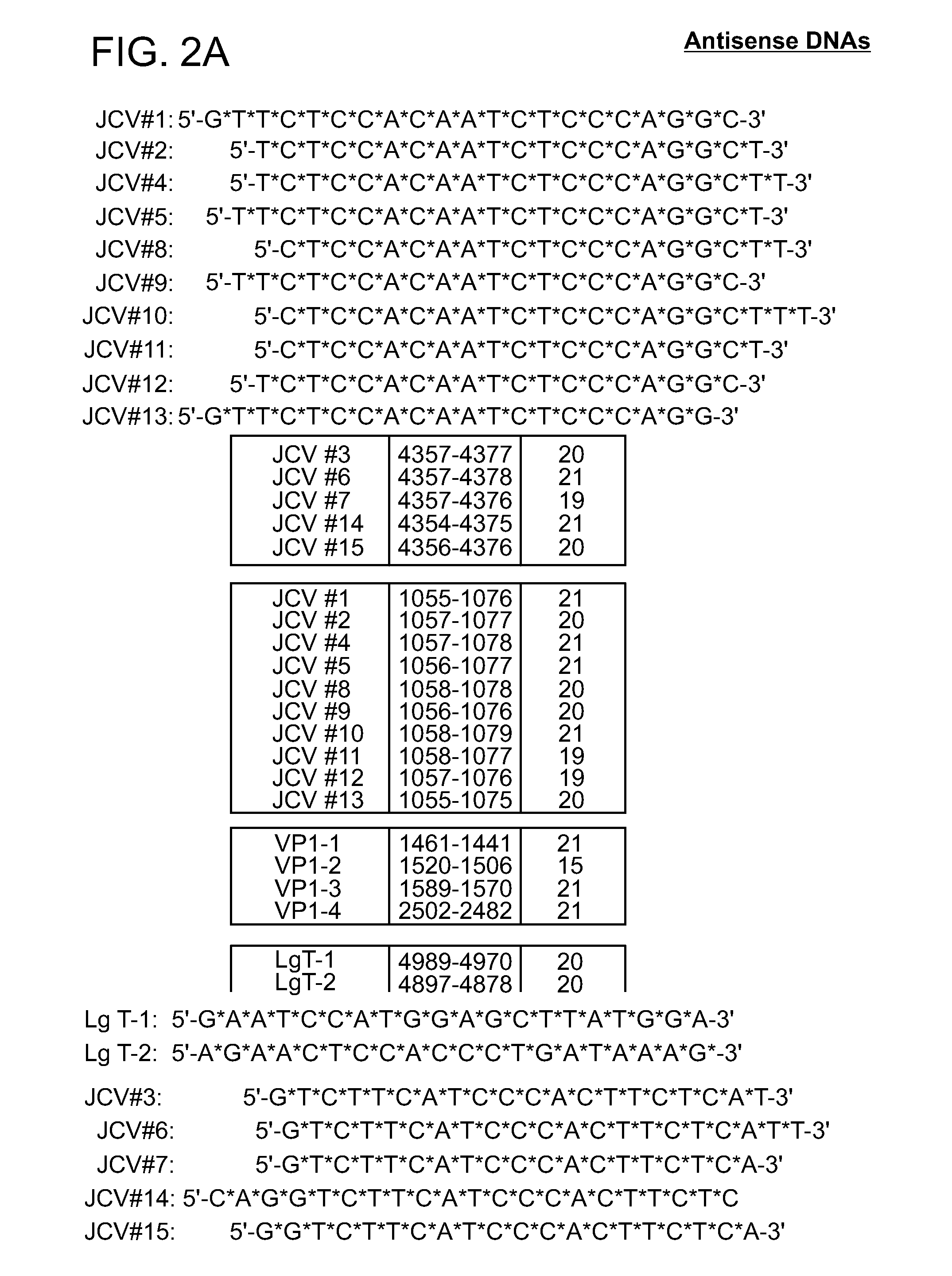Compositions and methods for inhibiting jc virus (JCV)
a technology of jc virus and compound, which is applied in the direction of dsdna viruses, peptides, immunoglobulins, etc., can solve the problems of poor prognosis of pml, herniation and death of patients, and brain edema, so as to prevent pml and prevent pml
- Summary
- Abstract
- Description
- Claims
- Application Information
AI Technical Summary
Benefits of technology
Problems solved by technology
Method used
Image
Examples
example 1
Blocking T-Ag Products with Antisense DNAs Reduces the T-Ag Positive Population
[0121]The effect of antisense DNAs were initially examined in a transient expression system of T-Ag protein where PDAs were transfected with JCV genome-containing plasmid pM1TC. To determine the transfection efficiency and distribution of this plasmid, the PDA cells were seeded on glass coverslips, transfected with 4.5 ug / well pM1TC, and co-stained by 5 and 9 days with both DAPI and AF-488 conjugated antibody against SV40 T-Ag, which cross-reacts with JCV T-Ag. Under differential interference contrast (DIC, FIG. 3A), PDA showed as large, flat cell with olivary-shaped nucleus which was stained blue with DAPI under fluorescence (FIG. 3B), allowing the determination of the total cell number per coverslip. The cells receiving pM1TC were stained green in the cell nucleus with the antibody against SV40 T-antigen (FIG. 3B). By 5 days following transfection, T-Ag staining presented as green granules in the nucleu...
example 2
The Effects of Antisense DNAs Against T-Ag and VP1 are Target Sequence Dependent
[0127]The sequence-dependent specificity of T-Ag suppression by JCV#3 and JCV#13 were further clarified in pM1TC-transfected PDA cells. Due to the cytotoxicity in the previous experiments using pM1TC co-transfection model, JCV#8 was eliminated from this (JCV-infected) and further studies. Instead, deoxynucleotides with random-distributed order, including Scramble 1 and Scramble 3, were included as additional sequence negative controls (FIGS. 5D and 5E).
[0128]In another set of experiments, the effects of antisense DNAs against large T-Ag (JCV#3 and JCV#14), against large T-Ag, small T-Ag, and the minor T-Ag splice variants (LgT-1, and LgT-2), against VP2 / 3 (JCV#8 and JCV#14), and against VP1 (VP1-2, VP1-3 and VP1-4) on the numbers of T-Ag+, VP1+ and JCV+ cells were examined Concentrations used were 0, 0.03, 0.06, 0.125, 0.25, 0.5 and 1 ug / well, one day following JCV infection of PDA cells at 200 HAu / milli...
example 3
Vp1-3 Reduced VP-1, but not T-Ag, Population
[0131]In JCV-infected PDA culture, the antisense DNAs against VP-1 RNA were also examined to determine their effect on VP-1+ subpopulation. VP1-2, VP1-3 and VP1-4 did not consistently reduce DAM+ cell numbers across various concentrations (FIG. 7).
[0132]At 0.5 ug / well VP1-2 suppressed VP-1+ cells by 23% (FIG. 7A). Antisense VP1-2 neither elicited cytotoxicity nor affected T-Ag+ subpopulation (FIG. 7B). Antisense VP1-3 dose-dependently reduced VP-1+ subpopulation and achieved 41% suppression at a concentration as low as 0.13 ug / well (FIG. 7C). Antisense VP1-3 did not elicit any changes of T-Ag+ subpopulation at any concentration (FIG. 7D). Antisense VP1-4 showed no effect on VP-1+ subpopulation (FIG. 7E). Similarly, antisense VP1-4 did not reduce the T-Ag+ subpopulation (FIG. 7F).
PUM
| Property | Measurement | Unit |
|---|---|---|
| Fraction | aaaaa | aaaaa |
| Antisense | aaaaa | aaaaa |
Abstract
Description
Claims
Application Information
 Login to View More
Login to View More - R&D
- Intellectual Property
- Life Sciences
- Materials
- Tech Scout
- Unparalleled Data Quality
- Higher Quality Content
- 60% Fewer Hallucinations
Browse by: Latest US Patents, China's latest patents, Technical Efficacy Thesaurus, Application Domain, Technology Topic, Popular Technical Reports.
© 2025 PatSnap. All rights reserved.Legal|Privacy policy|Modern Slavery Act Transparency Statement|Sitemap|About US| Contact US: help@patsnap.com



